Brine Dining with Sauerkraut
Sauerkraut, kefir, kimchi and other tangy fermented foods have gone from traditional to trendy.
When Andrea Barbuto’s kids burst through the door after school, they make a beeline for the kitchen. But instead of munching on a handful of goldfish crackers, or requesting a PB&J, they grab forks and dive into jars of their mom’s handmade sauerkraut with wild greens. Really.
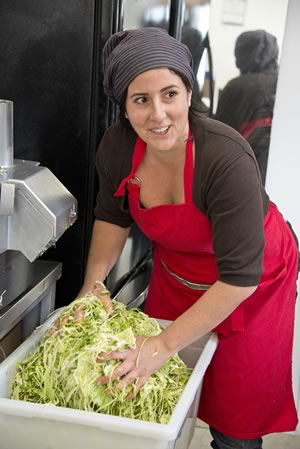
Andrea Barbuto of Wild Culture Ferments hand mixes a batch of sauerkraut in the commercial kitchen at Riverdale Farm and Forest in Inglewood. Photo by Pete Paterson.
Wild greens sauerkraut is just one of the fermented foods the Inglewood holistic nutritionist makes and packages under her raw and organic Wild Culture Ferments label. The line includes the Korean staple, kimchi, and an ever-growing range of krauts. The one favoured by her children is affectionately named The Wildlings after a rugged Game of Thrones clan. It features greens such dandelion, stinging nettle and garlic mustard, all of which Andrea collects in her backyard or purchases locally.
Fermentation has been used to preserve food and drink since 6000 B.C. and is behind the most enduring traditional dishes of many cultures. Kimchi, for instance, the pungent condiment made with cabbage, vegetables and the red pepper flakes called gochugaru, has been part of the Korean diet for centuries. Likewise, where would German cuisine be without the tang of sauerkraut?
In kimchi and sauerkraut the chemical reaction at work is called lactic acid fermentation, in which naturally occurring bacteria convert sugar (in dairy foods or from carbohydrates in such vegetables as cabbage) into lactic acid, which acts as the preservative. Salt is key, creating conditions that favour “good” bacteria and discourage pathogens, as well as changing the composition and flavour of the ingredients. As Andrea explains of her six-week process, “Chop it, salt it, massage it and wait.”
When each batch is done, it will feed a growing fan base of foodies hooked on her clever blends – each its own mix of sharp, sour and salty – who seek Andrea out at farmers’ markets, including Orangeville’s.
In addition to taste, fermented foods like Andrea’s are increasingly being touted for their probiotics – those live, good bacteria credited with health benefits such as aiding digestion – long associated with some kinds of yogurt. Emerging research also suggests probiotics may be important to mental wellness. A recent study by McMaster University researchers found a connection between psychiatric wellness and gut flora, building on a growing body of research suggesting particular bacteria can help or hinder the treatment of conditions such as depression. (A note: Foods with beneficial live bacteria need constant refrigeration. In the case of sauerkraut, look for raw, unpasteurized products. Shelf-stable sauerkraut, for instance, is usually pasteurized and doesn’t offer the same benefits. While not widely available, there are beer brewers and hard cider makers who use formulas that don’t lose their probiotics – as most beer and cider do.)
While experts are lobbying hard to include fermented food as its own category in Canada’s Food Guide, fermented food lovers are already there. If you’re a newbie, Andrea recommends starting slowly with a tablespoon or two a day to gauge how your stomach reacts. At her post at farmers’ markets, Andrea’s holistic nutritionist training regularly gets a workout as she listens to customers’ health and diet concerns. In between sales ($10 for a 500 mL jar) and offering mouth-watering samples, she also dispenses and collects serving suggestions.
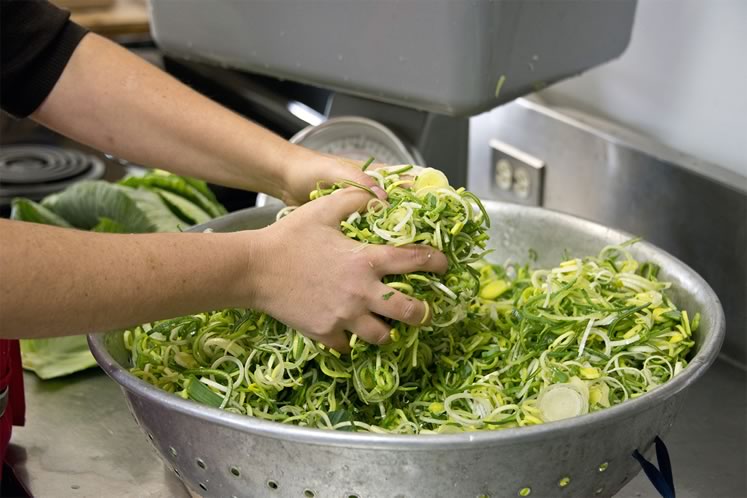
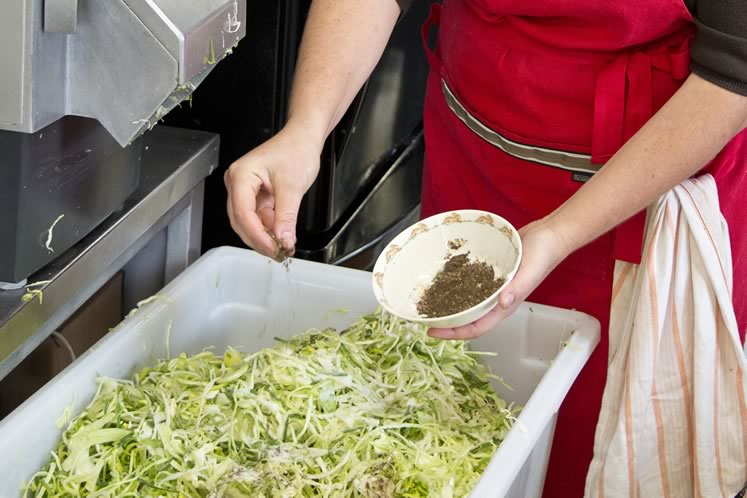
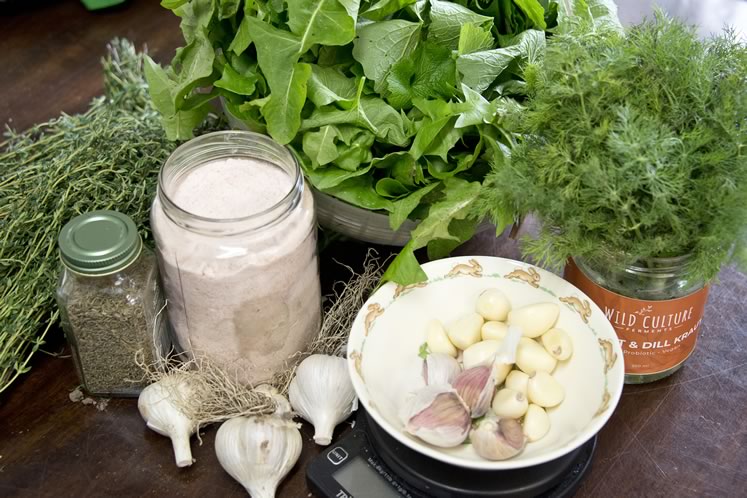
Andrea adds sliced leeks, wild greens, garlic, salt and pepper to a sauerkraut blend. Photo by Pete Paterson.
Andrea likes to pair her new cumin and caraway kraut with rice and lentils for a family dinner or on a tempeh Reuben for lunch. The carrot-dill blend could sub in anywhere you need a classic coleslaw. Of course, eating straight from the jar, as Andrea’s kids do, is perfectly acceptable and convenient as well. Pressed for her top pick, Andrea chooses kimchi, which she still craves despite her almost daily proximity to the stuff. “It’s like my body wants to ingest this raw, living food to help maintain an optimal balance,” she says.
Sigrid Wolm, a local food expert and owner of Orangeville’s Kitchen to the Table, says serving sauerkraut as a central part of a meal, rather than a condiment, is natural in her home country of Germany. Sigrid and employee Kristin Vettese have been making sauerkraut and fizzy kombucha, a drink made by fermenting sweetened black tea, in the store’s demonstration kitchen for the past two years for themselves and customers. Kristin and Sigrid are passionate about teaching shoppers to make these healthy products at home with yogurt makers, sauerkraut fermentation jars, food processors and mandolines for slicing all that cabbage.
Sigrid points out that DIY fermenting also offers the opportunity to purchase produce locally and support area farmers. “We want to help people make and maintain changes to live healthily, and trying fermented foods is one example,” she says. “We like to support people in overcoming previously held assumptions or fears about these foods and nurture not only their bodies but their curiosity as well.”
Mono home chef and local yoga teacher Fortunata McConkey radiates healthy living and enjoys experimenting with raw and cooked vegan and gluten-free foods. She regularly makes kimchi and kombucha at home and is happy they’ve eliminated her probiotic supplement use. She once tried her hand at making vegan kefir, the fermented milk drink popular in Eastern Europe and the Middle East, with little success. But her fermented coconut cream, though a little runny, shows promise as a vegan yogurt, she says. “Fermented foods taste great and complement any meal,” Fortunata says. “I love getting creative in the kitchen with whatever is available.”
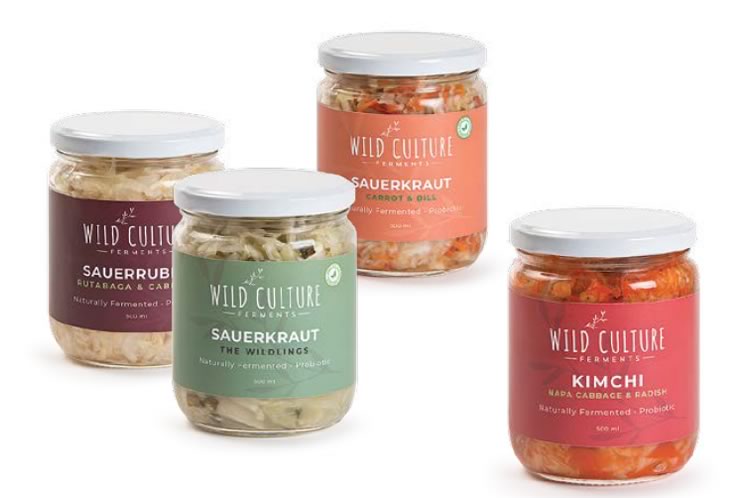
A few varieties of Andrea’s Wild Culture Ferments sauerkraut and kimchi. Photo by Pete Paterson.
When your own attempts collapse, there are plenty of new fermented products filling local shelves to turn to. Caledon’s Heatherlea Farm Shoppe stocks Wild Culture Ferments as well as a range of products from Green Table Foods and Live Kombucha from Guelph, and Booch Kombucha from London. Sheldon Creek Dairy near Loretto offers kefir and yogurt with the beneficial bacteria added after pasteurization.
Mother and daughter team Catherine Johnson and Shawna McFadyen of Caledon’s Country Brew bottle kombucha and another drink called jun – made from black and green tea respectively. They learned their methods from daughter/sister Michelle Tufts, who has run a successful probiotics business, Love Probiotics, in Guatemala for ten years. “People love the jun, especially our best-selling flavours, Radiant Raspberry and Blissful Blueberry, which are made with unpasteurized honey and have a smoother taste than kombucha,” says Shawna. Country Brew products are available in local cafés and some Foodland stores. (While some recent studies have questioned the purported health benefits of kombucha, and even cite possible rare side effects, most experts agree that sipping in moderation is fine.)
Back in the commercial kitchen where she works at Riverdale Farm and Forest in Inglewood, Andrea is the epitome of an Earth mother in action, rinsing fresh wild greens, chopping vibrant organic cabbage, carrots and beets, and keeping a watchful eye on the food-grade tubs quietly bubbling away. “My nutrition studies, food preparation background, and love of organic agriculture and wild food foraging – my whole life has led to these small jars of food.”
Related Recipes
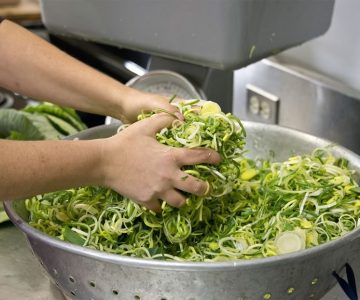
Simple Sauerkraut
Nov 22, 2019 | | SaladsHere’s a basic sauerkraut recipe to get you started on your own fermented foods journey.











Great article Would love to see this process in a workshop. Always worry if mine has gone bad or not.
pat mcknight on Nov 30, 2019 at 8:16 am |